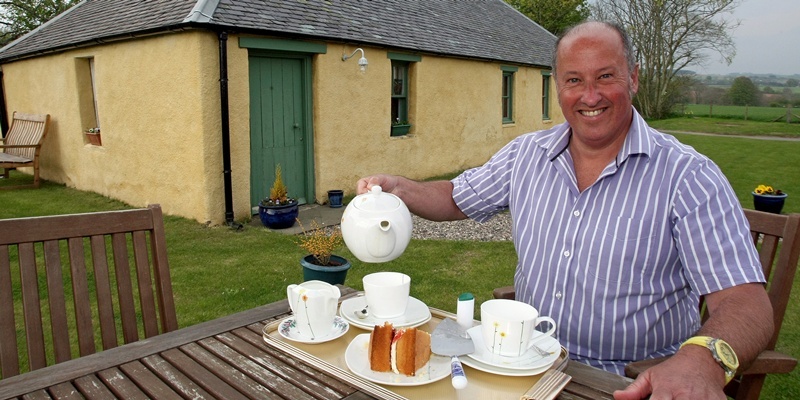It’s not every day a tourist can enjoy a cream tea inside a 179-year-old building made of mud and straw, but that’s exactly what’s on offer at an Angus attraction.
A-listed Logie Schoolhouse near Montrose was restored by the National Trust for Scotland after being saved from demolition. Its current tenant, Joe Wishart, who holds a six-year lease, is now offering guests an afternoon tea of homemade scones when they come to visit.
Although under no obligation to allow strangers into his home, Mr Wishart relishes the opportunity to provide guided tours of the building throughout the busier summer months.
He said, “It was an old school and church built from mud and straw which was then left to dry out. The National Trust did it up after it shut in 1990.
“I put on cream teas the last Sunday of every month from May to September and it is tremendous fun. People come from far and wide to see the building as it really is a beautiful site and I want the public to be able to see it because it is really is glorious.”
Mr Wishart has been at the unusual address for around two years and went through a selection process before the NTS deemed him a suitable lodger.
In 2009 the schoolhouse scooped one of the world’s highest accolades in building conservation — The European Union Prize for Cultural Heritage.
Experts at the NTS’s Little Houses Improvement Scheme completed the restoration of the structure, one of the last surviving examples of a mud-wall building in Scotland. The £390,000 project received funding from Historic Scotland, the Scottish Government and Angus Council.
Judges were impressed with the use of traditional materials and skills to carry out repairs, while ensuring the property meets modern housing standards.
Mr Wishart added, “I have local ladies who make scones, I have got girls who serve the cream teas and everything is sorted out for when visitors come up.
“When I took over the building I apologised in advance to the neighbours because I told them I wanted as many people as possible to come up and see the building.”
Last year The Montrose Society listed the schoolhouse among the finest new-build and restoration construction projects.
See www.nts.org.uk for more information.
